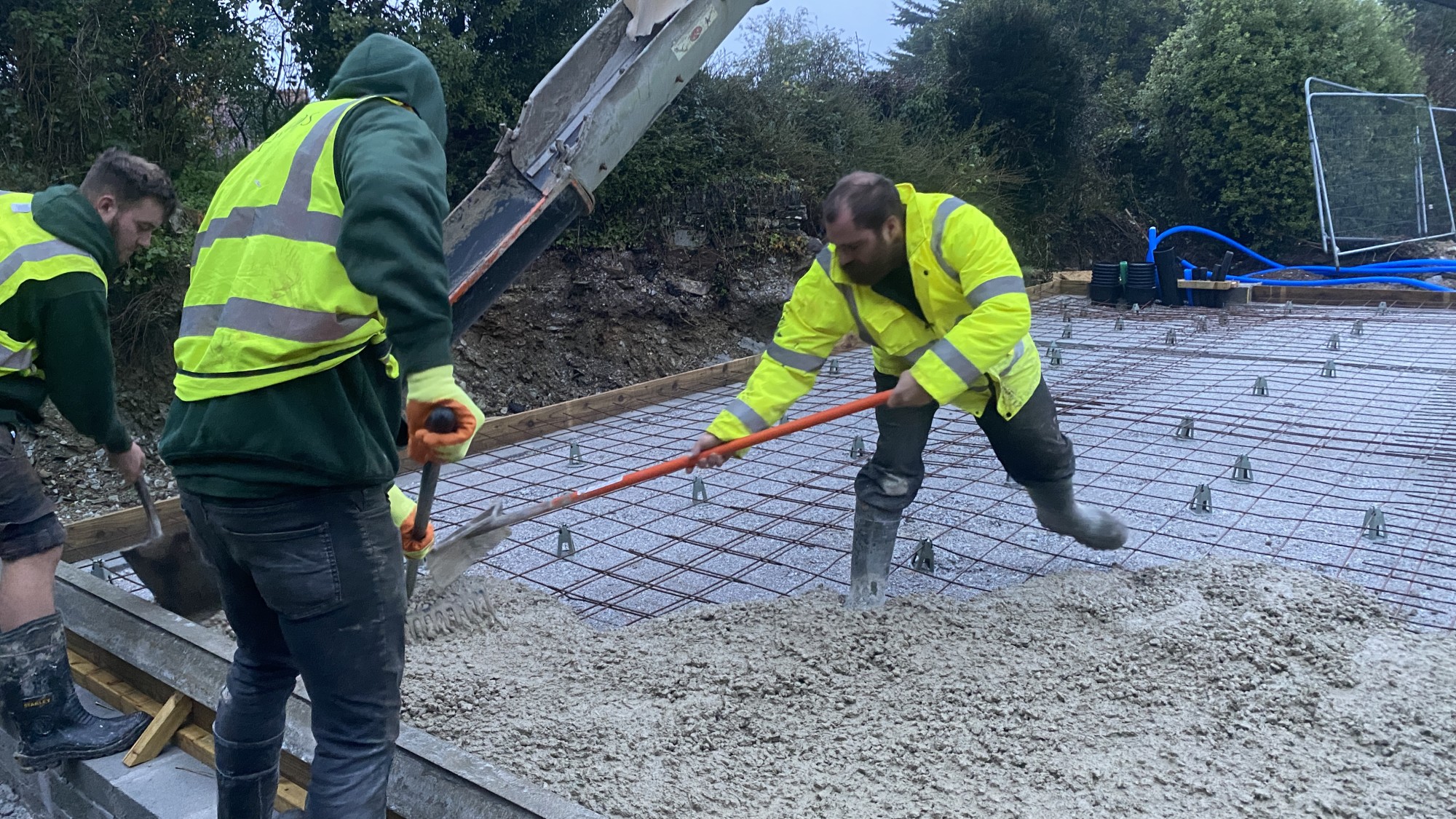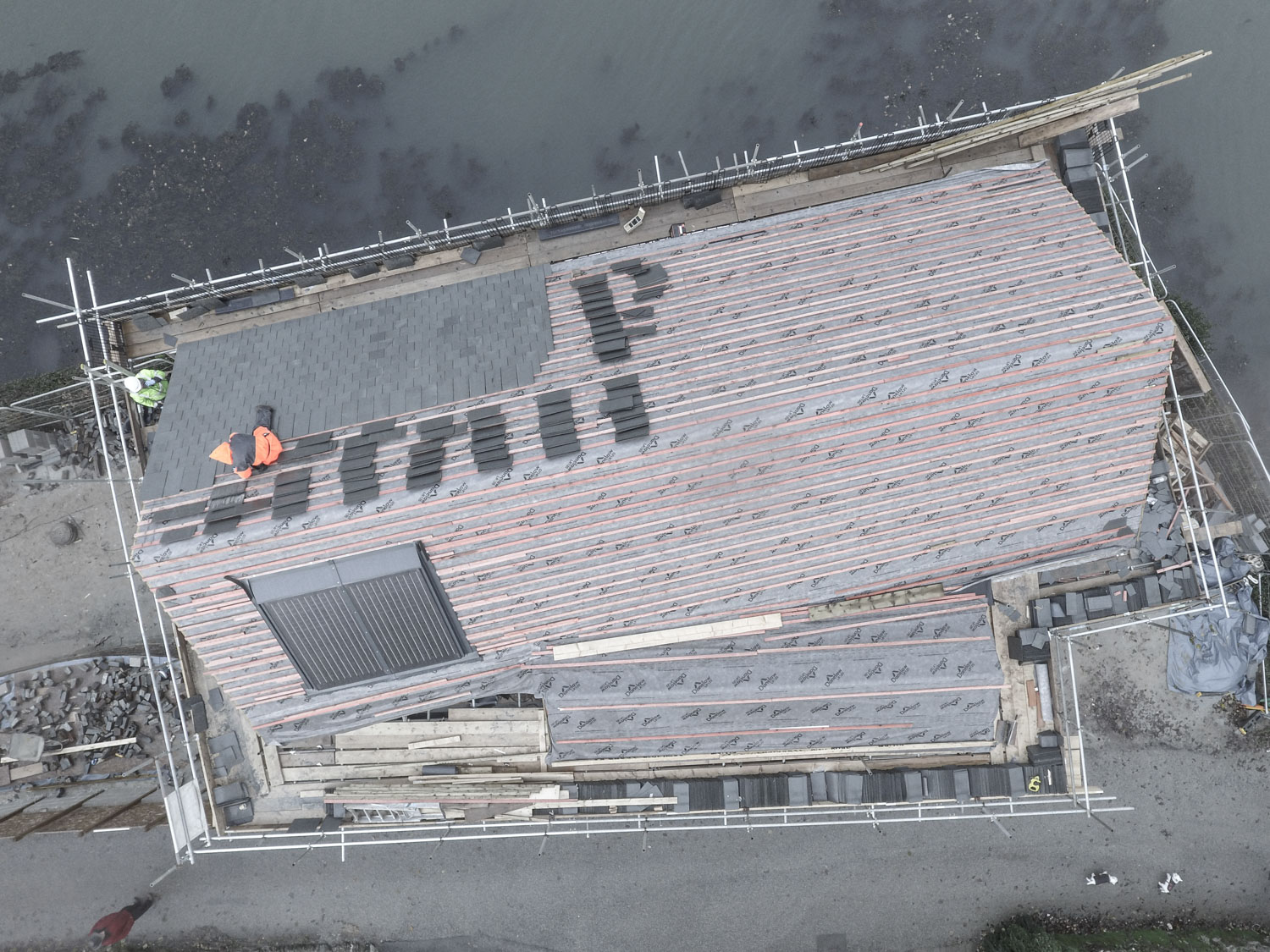Understanding your construction programme and timeline
Share:
In the world of construction, a well-structured and effectively managed construction programmeThe Construction Stage timeline, which we will produce during the Detailed Cost Review. It considers how tasks and trades will interact, overlap or follow each other. is essential for the successful execution of any project.
At Richards, we have an excellent understanding of how to do this – it’s our job after all – but if you, as our client, want to understand a bit more about the process, this article will hopefully fill in some of the gaps.
How are Construction Programmes produced?
Construction programmes are crafted at the project’s outset, serving as a timeline for the construction journey ahead, laid out in clear bitesize elements for the construction team to get their teeth into. Using information about your project, compiled during the Technical DesignFollows Developed Design. Collaborating with other consultants, we begin by drawing and specifying the aspects of a project to demonstrate compliance with Building Regulations. Following that, we define the finishes, fittings and all other aspects that will determine the overall project costs and the construction programme. This is also known as RIBA Stage 4. stage, the construction team work together to comb through all the elements of work, considering labourPhysical work done by our Bricklayers, Carpenters, Construction Supervisors, Subcontractors, Specialists and any other labour teams, and is distinct from Materials., materialsBricks, concrete, timber, cement, nails, screws, and everything else that makes up the building., delivery, cashflow, logistics and other distinctions, for each in turn depending on personnel power available, cost constraints and other nuances which may increase or reduce the anticipated duration. This is repeated for every element in the project, from the first time someone sets foot on-site, to the moment the project is complete.
The process of creating one of these scheduling phenomena requires an incredibly strong understanding of the construction being undertaken and can take around a week to be accurately completed for a single large custom-built home.
We are aware that some contractors lack the proficiency to craft an accurate and comprehensive construction programmeThe Construction Stage timeline, which we will produce during the Detailed Cost Review. It considers how tasks and trades will interact, overlap or follow each other.. This leaves their clients feeling let down and dissatisfied when that inadequate planning and scheduling results in poor project management and programme reporting, which leads to delays and cost overruns. Sure, you’d like it done in 9 months, who wouldn’t, but when 12-18 months is more normal, do you really believe it’s possible?
With Richards, you can be sure that our Construction ProgrammeThe Construction Stage timeline, which we will produce during the Detailed Cost Review. It considers how tasks and trades will interact, overlap or follow each other. will be accurate, and incredibly detailed, and you can trust it.
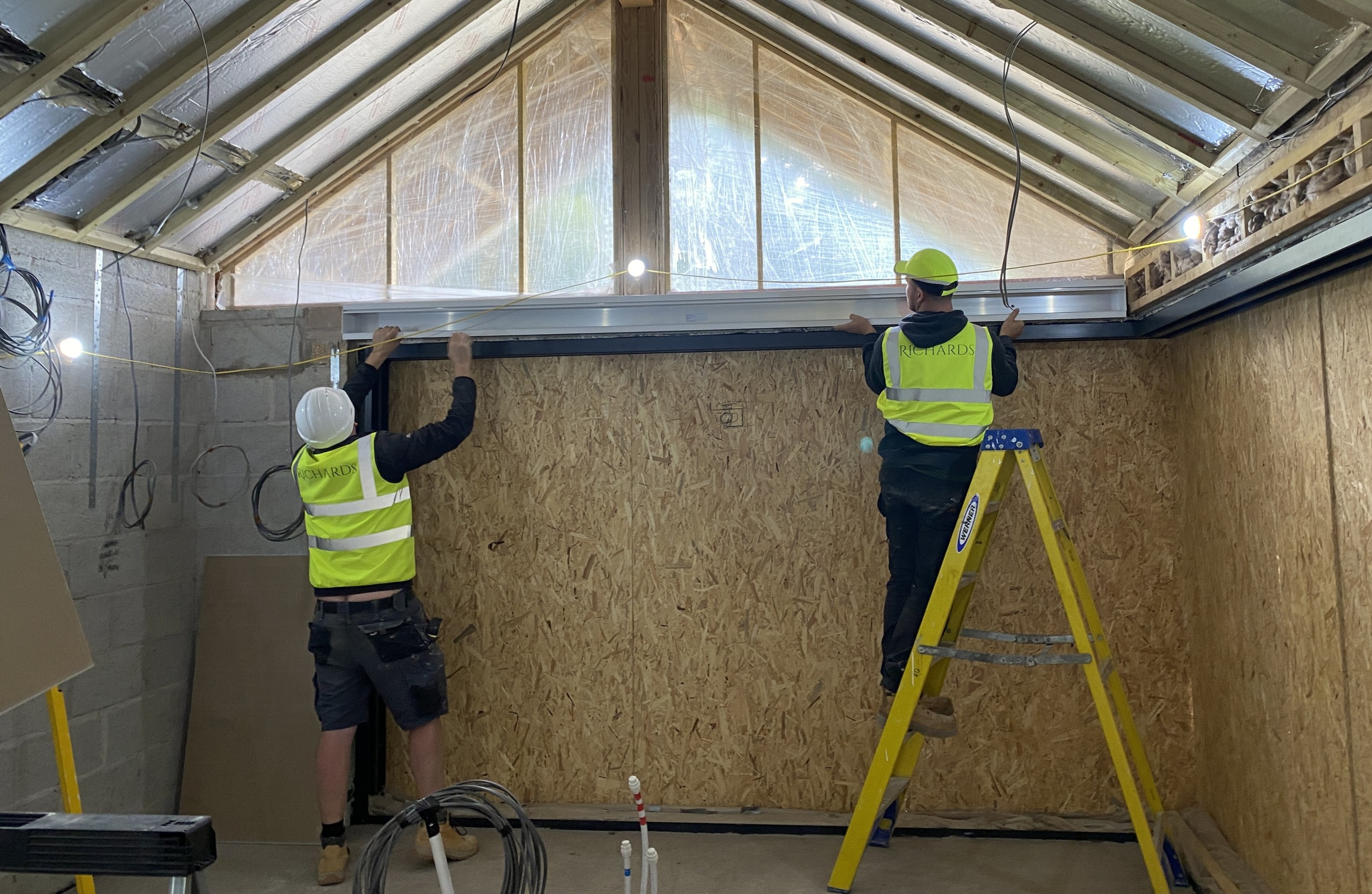
How are Construction Programmes used during the build?
Once the programme is complete, the construction team can begin to preplan the early elements of the work and organise larger elements with longer lead times before it gets too late. I’m talking windows and doors, people! Day to day, construction programmes are used as a foresight tool, to see what elements of work are coming up next and which resources will need to be leveraged to maintain pace. You can quickly see that, used in the right way, a construction programmeThe Construction Stage timeline, which we will produce during the Detailed Cost Review. It considers how tasks and trades will interact, overlap or follow each other. is a very powerful tool indeed, allowing project teams to proactively manage risks and make informed decisions to uphold the project schedule.
Construction programmes are dynamic, living documents that must be regularly updated to reflect the project’s current status. Changes in scope, resource availability, or unforeseen delays can impact the original programme. Project managers and site teams are tasked with monitoring progress, identifying potential delays or issues as time advances, then using specialised software, necessary adjustments are made to track progress and keep clients informed. An Excel spreadsheet thrown together on a lunch break isn’t up to the job here – we use specialist software.
Understanding the Critical Path
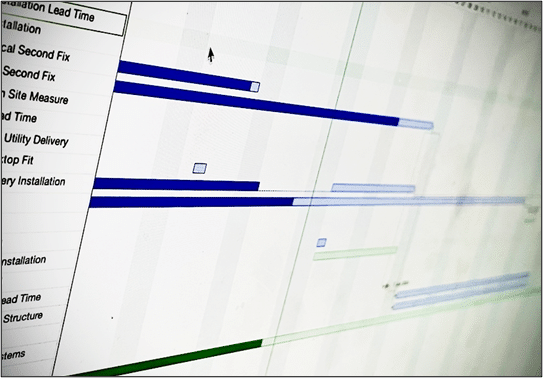
The critical path is a fundamental concept in construction programming (or any project management, in any sector – you may have come across it elsewhere), that identifies the sequence of tasks crucial for determining the project’s overall duration. Tasks on the critical path are essential for meeting project deadlines. While a small delay in a non-critical path element may not cause a problem long term, any delays in critical path tasks can directly and immediately impact the project timeline. An obvious one, is that we can’t start work on anything electrical until the building is watertight.
Rarely, there are times when a non-critical path element of work is delayed to such a degree that it becomes part of the critical path. As an example, a project team needs the joinery team to install the new staircase, but they have been delayed due to problems in their supply chain. Normally, in a project like this, the stairs would be installed along side, and completed before the rest of the joinery in the new home, so wouldn’t have been on the ‘critical path’, but now the rest of the joinery is finished – and still no stairs and the decorators are due in soon. This means that the stair installation has now been promoted to the critical path, and the next element proceeding relies on its completion.
Gantt Charts and Their Use
Gantt charts are visual tools used to represent the schedule of a construction project. Popularised in the early 20th Century by engineer Henry Gantt, they present tasks, durations, and dependencies in a timeline format, enabling project teams to visualise the sequence of activities and track progress over time. These days, computer software allows us to go further; tracking cost, hours worked, and knock-on effects just by adjusting a bar representing a work element’s time to a new length on the computer screen. We use these charts every day as a strong visual aid for our onsite team to identify critical tasks, and to manage future resource allocation efficiently.
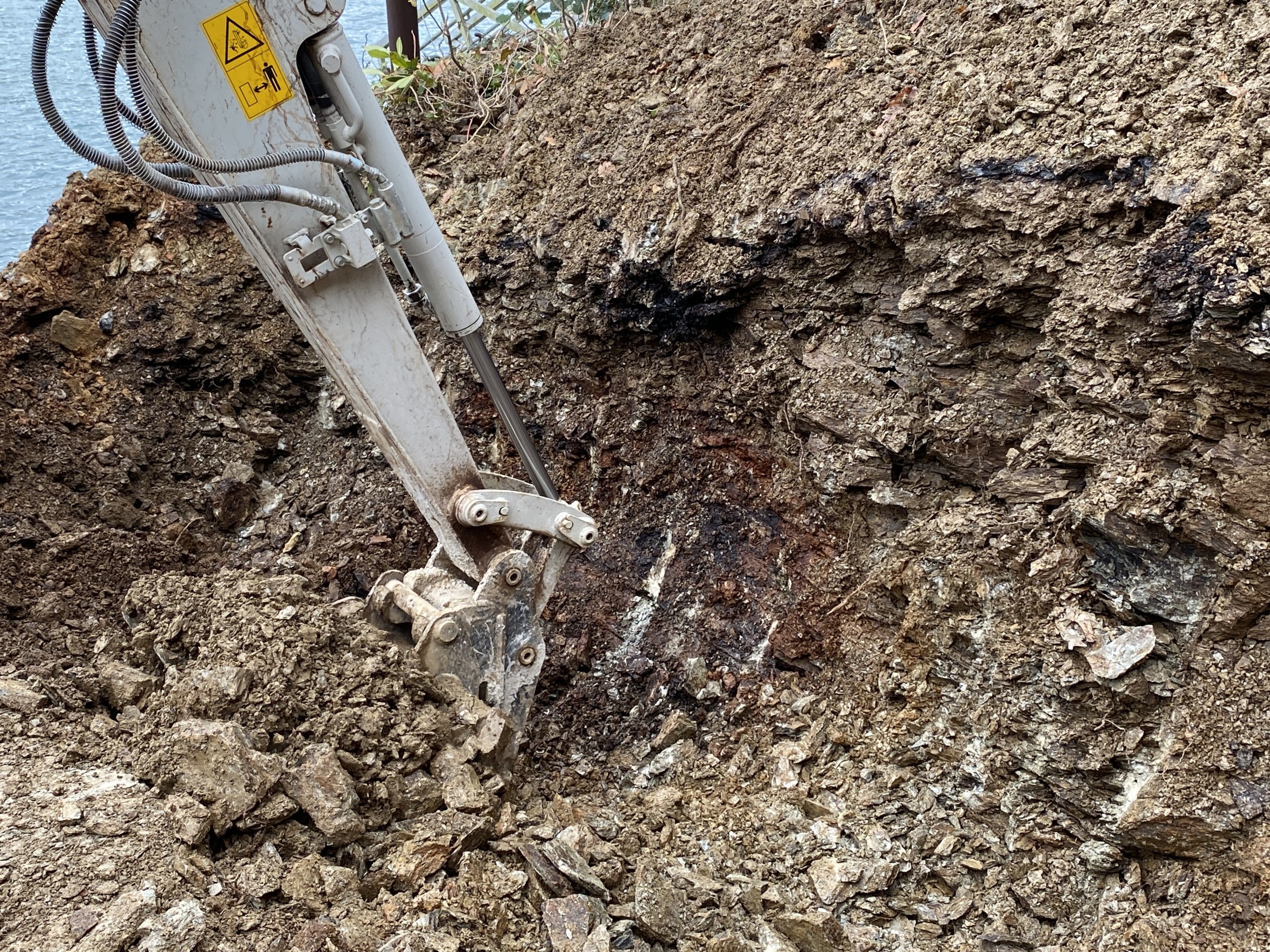
Extensions of Time and the JCT Contract
In construction projects, unforeseen circumstances or delays may necessitate extensions of time to complete the work – Exhibit A: the British Weather! An ‘extension of time request’ is an official application to the client to extend the project length by a specific amount. This will include the reason for the delay, and the new completion date. A Joint Contracts Tribunal (JCT) contractA legal document signed by both the client and the service provider, which sets out the detail of the services to be provided, and any constraints, and how the project should be managed. We typically will use the JCT Design and Build Contract, depending on the service you choose., a commonly used standard construction contractA legal document signed by both the client and the service provider, which sets out the detail of the services to be provided, and any constraints, and how the project should be managed. We typically will use the JCT Design and Build Contract, depending on the service you choose., includes provisions for extensions of time. Project teams can refer to the contractA legal document signed by both the client and the service provider, which sets out the detail of the services to be provided, and any constraints, and how the project should be managed. We typically will use the JCT Design and Build Contract, depending on the service you choose. terms to understand their rights and obligations regarding time extensions, ensuring clarity and transparency in project management.
We hope this helps you understand the construction process better, and some of the terms and tools that you may hear mentioned. Your project’s construction programmeThe Construction Stage timeline, which we will produce during the Detailed Cost Review. It considers how tasks and trades will interact, overlap or follow each other. will be tailored to the exact details of the site and materialsBricks, concrete, timber, cement, nails, screws, and everything else that makes up the building. that are required. When you, as a client, are responsible for making decisions along the way, knowing when those decisions need to be finalised, and what else hangs on those decisions, can be a real help to your construction team, and help avoid unnecessary delays. All of which will help you to arrive at the final destination – a triumphant conclusion to your project!

